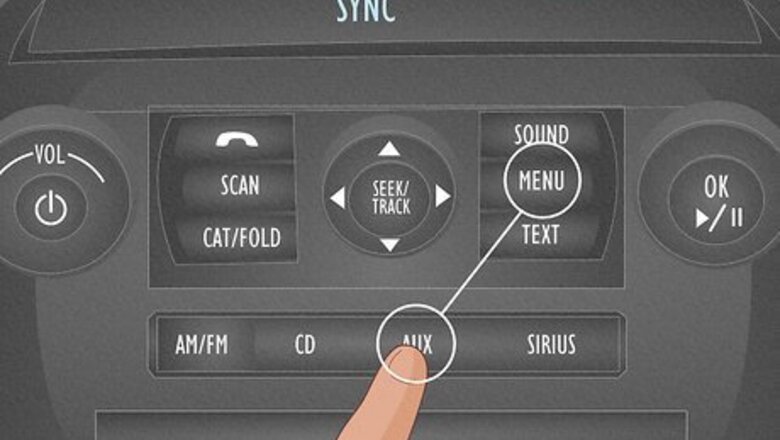
views

Get to the Media Menu's setup menu. To get to the Media Menu, the 2012 Ford Fusion's Microsoft Sync tucks the menu away so it's harder to find - but then explains how to get there in the book only. Realize that "Media Menu" has no available options to set, and is used as a placemark selection "title" option. Use the Aux button - found on your dashboard below the center arrow selectors between the "CD" and "Sirius" buttons - until "Sync" appears in the display. Access the menu. Press the Menu button once. This button is found directly to the right of the 4-way directional buttons, between "Sound" and "Text" (just to the left of the Ok button.
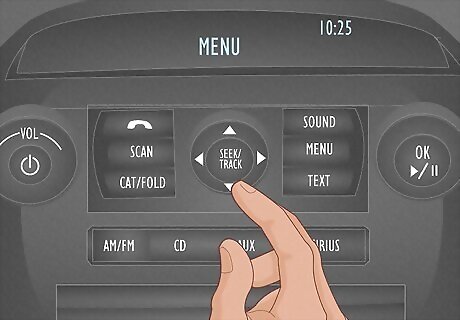
Scroll downward one time.
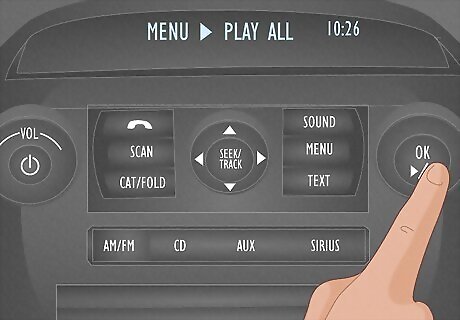
Navigate the Play Menu. The following options are given. Play All only one needs one "Ok" selection, however, all other options - up to but not including Explore USB and Similar Music - require saying Ok to the option then scrolling to the selection and saying "OK" again. Play All plays all the indexed tracks from your device one at a time in numerical/alphabetical order. Artists plays particular artists as represented by the two-line display. If there are more than 255 artists, Sync will alphabetize them into smaller groups and play each alphabetized letter. Albums plays individual albums. If there are more than 255 albums in the indexed database, they will be alphabetized into smaller groups and played via each alphabetized letter. Genres plays individual genres. If there are more than 255 genres in the indexed database, they will be alphabetized into smaller groups and played via each alphabetized letter. Playlists plays individual playlists (saved in ASX, M3U, WPL or MTP). If there are more than 255 playlists in the indexed database, they will be alphabetized into smaller groups and played via each alphabetized letter. Tracks plays individual songs. If there are more than 255 tracks in the indexed database, they will be alphabetized into smaller groups and played via each alphabetized letter. Explore USB helps explore all the digital media on a device plugged into the USB port - as long as the files are compatible with Sync. Similar Music uses the metadata information of each track to compile Sync's playlist and track similar tracks. Some devices won't have metadata filled in, making for these playlists to be unavailable to be used in voice recognition. But other placed tracks are set to "Mass Storage Device Mode", for tracks that don't have the necessary track details, this metadata will be set to "Unknown" and these will become playable. Avoid using Similar Music - or use at your own risk, of understanding this data.
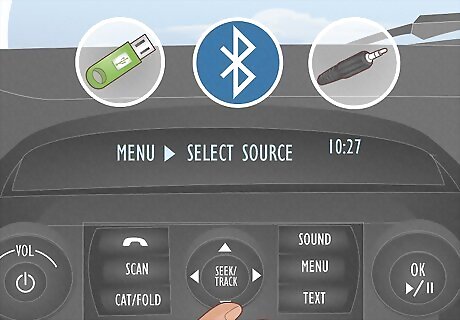
Navigate the Select Source menu. The Select Source menu gives you all the available sources and needs to be selected each time you connect a new device to a different port. There are essentially three options. Sync USB if the music device is connected by standard USB to the USB port in your center console. After moving further into the menu, when you use the down and up, once you see "Sync USB", press the OK button. Keep in mind that this USB can also be used to charge the device at the same time. Bluetooth Audio if the music device is paired to your Microsoft Sync system via the same setup for phone connections. However, once connected, you can access tracks by using the Seek < and > buttons as part of your arrow keys or the << and >> Seek keys on your steering wheel buttons. After moving further into the menu, when you use the down and up, once you see "Bluetooth Audio", press the OK button. Sync Line In if the music device is connected via an auxiliary cable to your Aux jack inside your center console. But you will need to supply the Aux cable because it's not sold with your vehicle. If a device is plugged into the USB port, the aux port will be disabled from being used.
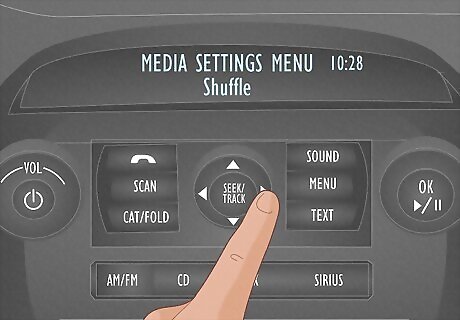
Navigate the Media Settings menu. Once you see Media Settings, to see all options to set, press the Ok button. They remain turned on, once set - until you turn them off. Shuffle allows your system to shuffle songs (play songs out of order, in a fairly random fashion). It's turned off by default, but you can turn it on so songs play in random order by pressing OK again. Repeat allows your system to repeat songs on endless repeat. It's turned off by default (so songs play in a playlist of - what should be - different songs), however, you may press Ok when you open the Repeat settings to turn it on. Autoplay allows your system to only listen to songs that have been randomly indexed upon the indexing process. Press Ok to turn on this feature. However, turning on autoplay alleviates the need to keep having the device search track by track, but takes some stress on additional wait for the track to buffer/index. If you need to move between tracks, just press the Seek back and forward buttons.
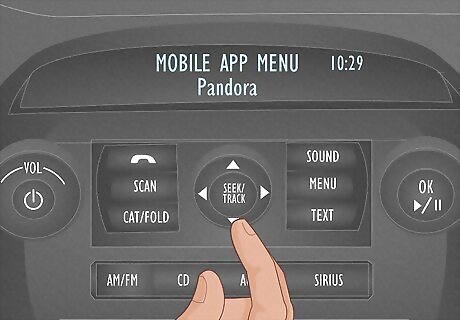
Deal with the Mobile App menu. Here - like in the Phone menu by the same name - you can access all your Microsoft Sync apps - such as Pandora and many more - formerly accessed by SyncMyRide.com or SyncMaRoute.ca - used to come in and be added for additional coverage of helpful tasks - through SYNC AppLink™.
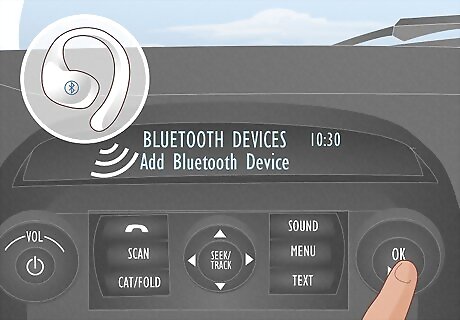
Access your System Settings. Here you can change what's connected via Bluetooth and access additional system settings. Bluetooth Devices gives you setting such as to Add Bluetooth Device, Connect Bluetooth Device, Set Bluetooth on/off, Delete Device, or Delete All Devices. Connect and Add Bluetooth Devices have different uses. Connect allows you to bring back onboard previously connected devices that have since been disconnected or have been assigned so other devices can be used by default. Add just allows you to connect new devices for the first time. Connect is technically an on-off switch for selecting the device to be used/connected to when you switch to a Bluetooth Audio device. Advanced gives you additional tasks to consider. Prompts gives you guiding prompts that make selections easier with helpful hints and ones that ask you to complete a specific action. It's turned on by default, but you can turn them off if you'd like. Languages gives you ways to change the language used by the system and via the two-line display's text. However, it gives you only three choices of language English (set by default), French, and Spanish. Setting the language may take a few moments, and the display will update you accordingly and you'll be taken back to the Advanced menu afterwards. Factory Defaults gives you ways to revert to Day 1 Settings - the day your car got picked up by the first owner, but won't erase your indexed information including phonebook, call history, text messages, and paired devices lists. It does not have a default on/off switch, as it's meant to not be used often. Master Reset reverts everything to Day 1 Settings including all indexed information. This is often the first line of choice when ownership of the vehicle changes hands. Install Application? gives you a way to install SYNC applications running a file over a USB stick from your USB port in your center console. However, files downloaded from the former SyncMyRide/SyncMaRoute website will still work, but neither site - SyncMyRide/SyncMaRoute is left inaccessible. Return brings you back to the Advanced menu if you chose not to make any additional changes, by pressing Ok (or the left arrow button on your dashboard only when this option is displayed).

















Comments
0 comment